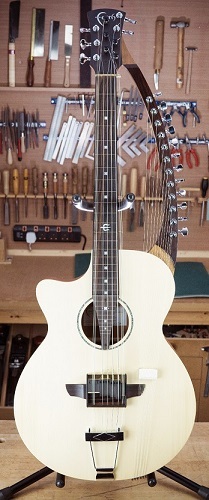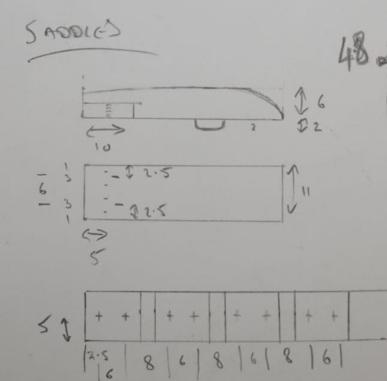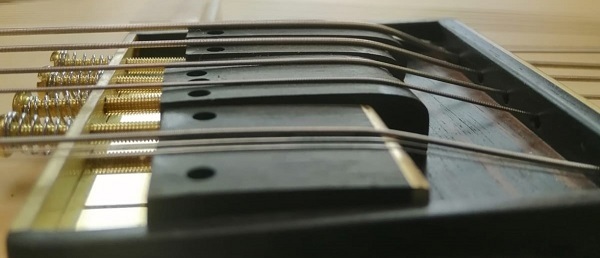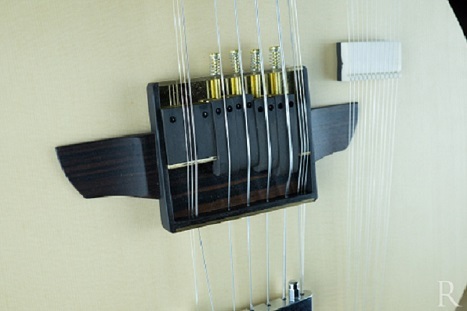Jawari design for acoustic guitar

In July of 2021, I was approached by Conner Stewart, a Scottish guitar player and a student of Indian classical music. He was having an existing acoustic guitar transformed to become more suitable for Indian music. Connor asked me to advise his guitar maker, Ryan Gibson, about jawari and the basic setup for this kind of guitar bridge.
I’m not at all knowledgeable about the ins and outs of the guitar, but I do know what jawari is and its different applications. So, together with Ryan, we discussed various possibilities.
I always liked the electric guitar bridges, where each string has its own horizontally adjustable saddle sections for intonation purposes. So, I was wondering if it would be possible to also add a vertical adjustment system for tweaking the sound, and timbre on a jawari-type bridge.
The challenge with this idea was mainly the fact that the vibration of the string needed to go via the two vertical and horizontal moving saddles on the bridge, which would mean that less vibration would actually reach the soundboard. On an electric guitar, this would be no issue because it uses pickups, but on an acoustic guitar, this would consequently mean that the volume of the instrument would be minimalized. However, the experiments were positively surprising, and the volume was hardly affected by the two, parts of the saddles. Ryan had devised an ingenious rounded foot under the bridge that allowed the tilt of the bridge sections to always have contact with the soundboard. This opened the way for the continuation of this idea.

The separate saddles could now be horizontally and vertically adjusted for the intonation and the strength and intensity of the jawari on each of the strings. This system has created a way to balance out the strings and to determine the open or closed vibrational effect of the overall sound. Using An Allen key the saddle can be raised, consequently closing the jawari sound, i.e. creating fewer overtones.


By the way, this is a left-handed guitar for Connor. The strings are set up like those of the veena, high playing string next to the lower chikari strings. Also, there is an extra chikari set on the upper side. Connor plays it as a slide guitar.
As with all jawari type bridges, after a while, the jawari saddles do wear down a little creating small grooves on the surface of the bridge. These grooves slowly alter the vibrational quality of the sound, and normally will need some maintenance. Because of the vertical adjustment possibility, one can most probably, rectify this problem.
The taraf (resonation) strings on this guitar use a normal small sitar taraf bridge.
All in all, an interesting step forward in the jawari possibilities on some Indian instruments.
Please contact Ryan Gibson for more information
Tel - 07939 434882
